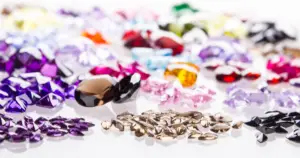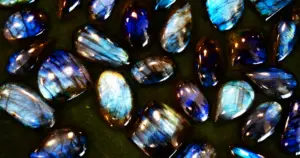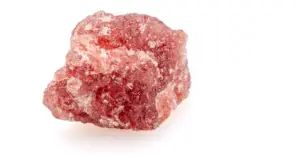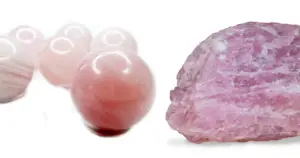How To Tell If Malachite is Real Or Fake In 7 Easy Ways
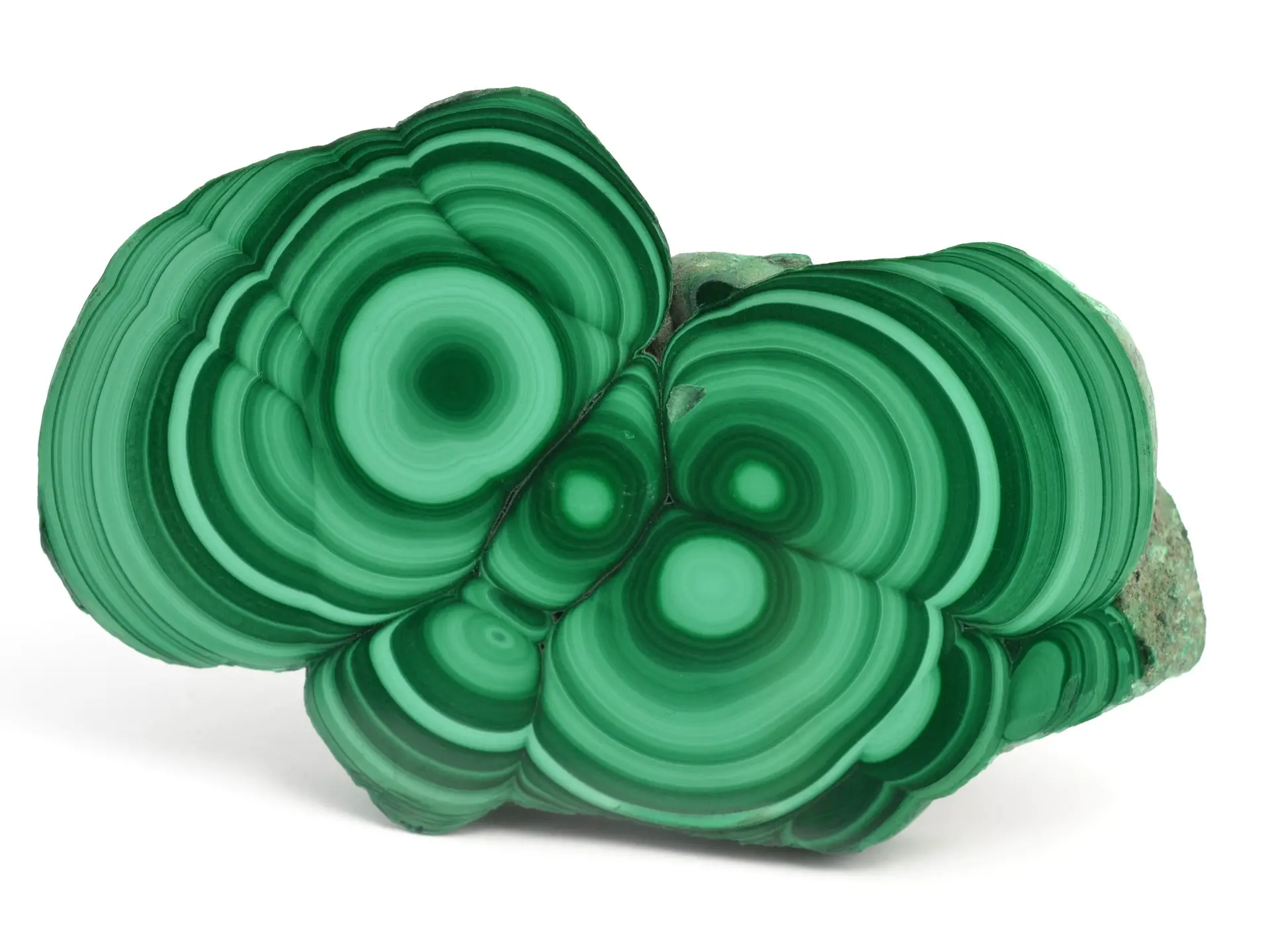
Since ancient history, Malachite has been mined for its distinctive color and its supposed medicinal capacities as a healing stone due to its soothing green color. Unfortunately, due to its famed healing powers and prestige in ornamentation, Malachite is readily duped and cheaply made available. Let us explore how to tell if Malachite is Real or Fake.

What are the potential ways in which a Malachite can be faked? What are you getting if not a Malachite?
- In its chemically most distinct form, what is sold to you as Malachite may be colored glass/plastic beads
- What still compositionally passes off as Malachite, but frequently not enough to allow you to leverage the healing energies of the stone, could be re-processed or reconstituted bits of the mineral made from crushed leftovers, blended with dyes and resins.
- Lab-made copper carbonate hardened using artificial hardening agents is also often sold as Malachite.
Read about the Benefits of Malachite here.
Table of Contents
How to tell if Malachite is Real or Fake?
To begin with, an easy way to prevent yourself from being duped into paying higher prices for your stone is by asking for the cut, carat, and clarity of your gemstone from your seller.
Can Malachite go in the Water? Is Malachite Water Safe? Read here.
Observe the Cut of the Stone
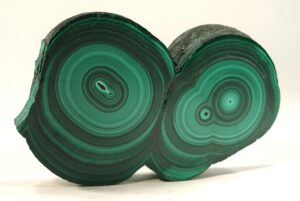
A gemstone’s cut and the artisanship that went into fashioning it directly influence its appearances and subsequent grading and cost.
Therefore, inspect the stone first by placing it in your hand. Malachites are softer than most gemstones and extremely sensitive to heat. Therefore, they are typically grafted as beads or cabochons and may be unevenly shaped due to the uniqueness of their handiwork.
- Synthetically made beads of Malachites are many perfect spheres due to the easy malleability of commonly occurring dupes such as Glass and plastic and may more closely resemble the marbles made of Glass that we played with as kids.
- While buying a Malachite, you can insist on inspecting it under magnification. Look at the facets and scrutinize the surface areas that reflect and absorb light.
- Malachite crystals under a lens are prismatic; that is, they have needle-like crystals. Pits, scratches, or dull areas indicate poor polish and, therefore, lower quality of the stone.
Check for the Clarity
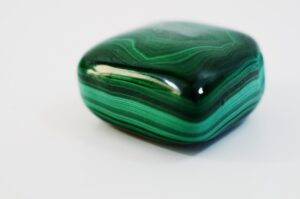
Beauty may be skin deep, but fractures and incisions and the energies that are seated in them go deeper into the gem.
Pay special attention to these ruptures and fractures while buying a Malachite.
Since Malachite is softer than most gems and prone to easy powdering, its leftover powder is often mixed with other impurities and hardening substances to produce stones where the core mineral of the Malachite may be minoritized.
Such stones have much less structural integrity and are therefore prone to breakage.
The weakness of a Malachite may also depend on the form in which it occurs. So, earrings, pendants, and brooches don’t receive much abuse and are stronger than ring stones. A Malachite ring may therefore be much weaker than rings made of harder stones.
Check for the Coloration and Banding
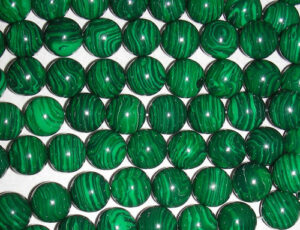
Pure Malachite is always green due to its chemical formation of copper carbonate. It typically occurs in several sensitive and concentric patterns of green.
The word ‘malachite’ has its origins in a Greek word meaning ‘mallow green stone’, due to its striking resemblance to the green of the mallow leaves and has been used for several centuries as a dye for artistic, medical, and industrial purposes.
If you are being sold a severally colored variety of malachites such as the ‘red malachite’, it is likely to be a cheaper/dyed stone.
What is often marketed as multicolored ‘malachite’ is often dyed Howlite. Malachite can, however, and often does occur naturally with a rich blue mineral called Azurite, as seen in the raw mineral in the adjacent picture. This can create a stunning combination of azure and green colors on your gemstone.
Begin by observing the striped patterns on your stone. Gemologists call this ‘banding’.
The bands on a real malachite can range from deep seaweed green to a green resembling the color of the Statue of Liberty and can be dispersed throughout the gemstone in several patterns: waves, circles, speckles, etc.
Fun Fact: Malachite gets its vibrant green from the chemical reaction between carbon and copper, quite similar to what has occurred on the surface of the Statue of Liberty over the years.
The patterns and uneven scales of color on a real Malachite are indicative of the differential zones of chemical reactions between copper and carbon.
The most tell-tale sign that a Malachite is fake is a dichromatic green and an even spread of black/white bands of color on the stone.
The uniform banding on the beads in the picture is characteristic of colored Glass, unlike real Malachite, where the color is intrinsic to the chemical composition and not a cosmetic additive.
Check for Transparency
Whether a stone is opaque, translucent, or transparent is a product of light interacting with its mineral constituents.
Copper Carbonate, in its polished form, ranges from translucent to opaque. This may be an efficient comparative index to tell apart the material of the stone being sold to you.
Glass and plastic are often way more transparent and reflective than Malachite, which gives them a luster that is uncharacteristic of Malachite. A synthetically dyed plastic or resin may be much more opaque than Malachite’s actual occurrence.
Check for the Temperature and Feel
Genuine Malachite is cold to touch and heavy to hold for its given density. It is heavier than strong Glass or plastic and feels thick and super cold when held.
Plastic fake Malachite is easy to spot as it is fairly lightweight and warms to the skin extremely quickly.
Fake Malachite made from Glass could feel just as cold and hard to the touch as genuine Malachite. Still, because it is Glass, it will warm up in your hand much quicker (real Malachite won’t warm up much at all to match the body temperature and feels cold even after extended periods of contact.
Check for the Streaks on the Crystal
Since Malachite’s distinctive and unevenly spread coloration is a part of its constitutive chemical composition, a streak test is an efficient way to tell if a given stone has Malachite or not.
You can run a streak test by rubbing your stone against a white porcelain tile, and if it leaves behind a green streak, it contains real Malachite.
Tip: If your stone leaves a white streak or a scratch/indentation on the tile, it means that your gemstone is too hard for the tile, which is uncharacteristic of Malachite since, in its raw form, it is soft enough to crumble into powder fairly quickly.
Conduct an Acetone Test
A common impurity in synthetic Malachite is resin, which is soluble in acetone (nail polish remover). If you have a stone that you think is fake Malachite, you can dip it in acetone for thirty seconds. If the stone starts to disintegrate, then you have a fake Malachite in hand.
Few Benefits of Malachite
- Malachite absorbs negative energies and weeds off pollutants from both the body and its neighboring atmosphere.
- Perhaps more necessary now than ever before, this stone safeguards against contaminants, noise, harsh lighting, and radiation from technological equipment.
- It also balances the mind in stressful environments, acting as a layer of protection and calm.
Read here What is Malachite stone good for?
Final Comments
In this article, we have enumerated the various ways you can tell apart Malachite from other commonly occurring fakes. The most telling of these is its appearance across these registers: color, clarity, luster, and transparency.
These shall come in particularly handy to those buying crystals online or from a remote seller. If you suspect that a Malachite you already own is fake, you can run such tests as the streak test and the acetone test.
Another more destructive option is putting your stone under the flame, and if it burns with the smell of plastic, you can be assured that it is fake.
Some tip to keep in mind while buying a Malachite, like any other crystal you intend to incorporate in your daily living, is to feel the crystal and let its energies communicate with you.
While you learn to open yourself up and accept the stone’s offering, make sure to squeeze in a temperature check.
